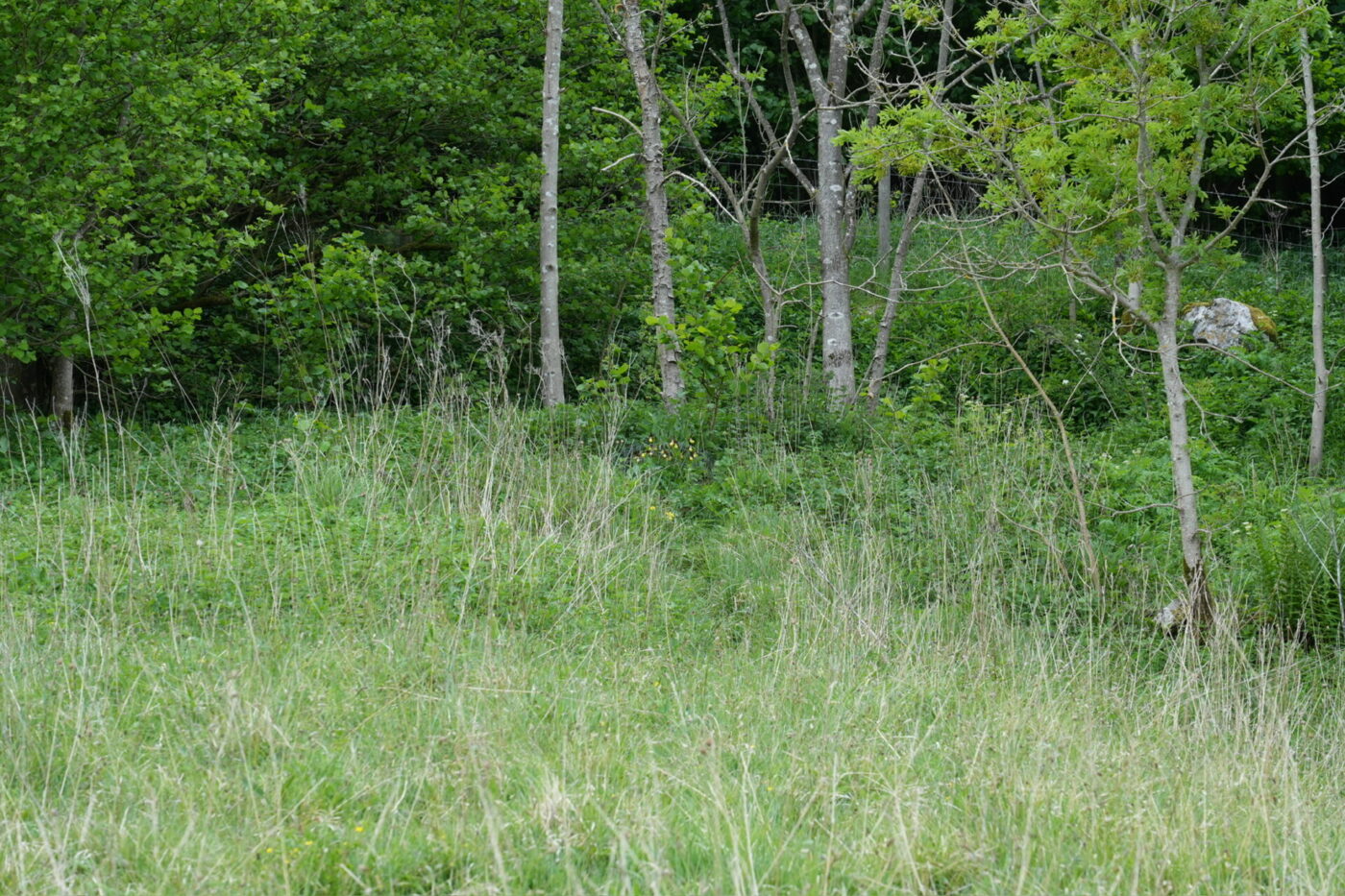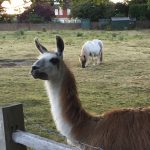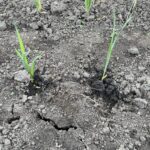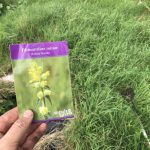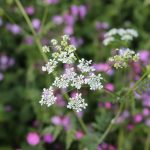It’s been a long time coming but this year I visited one of the reintroduction programme sites for one of the UK’s rarest wildflowers, a wildflower so exotic looking it’s hard to believe it grows on our damp island. On an east facing slope a little further north of where we live in the Kilnsey Park trout farm of all places, is a damp calciferous meadow with alkaline conditions suitable for the Lady’s slipper orchid, Cypripedium calceolus.
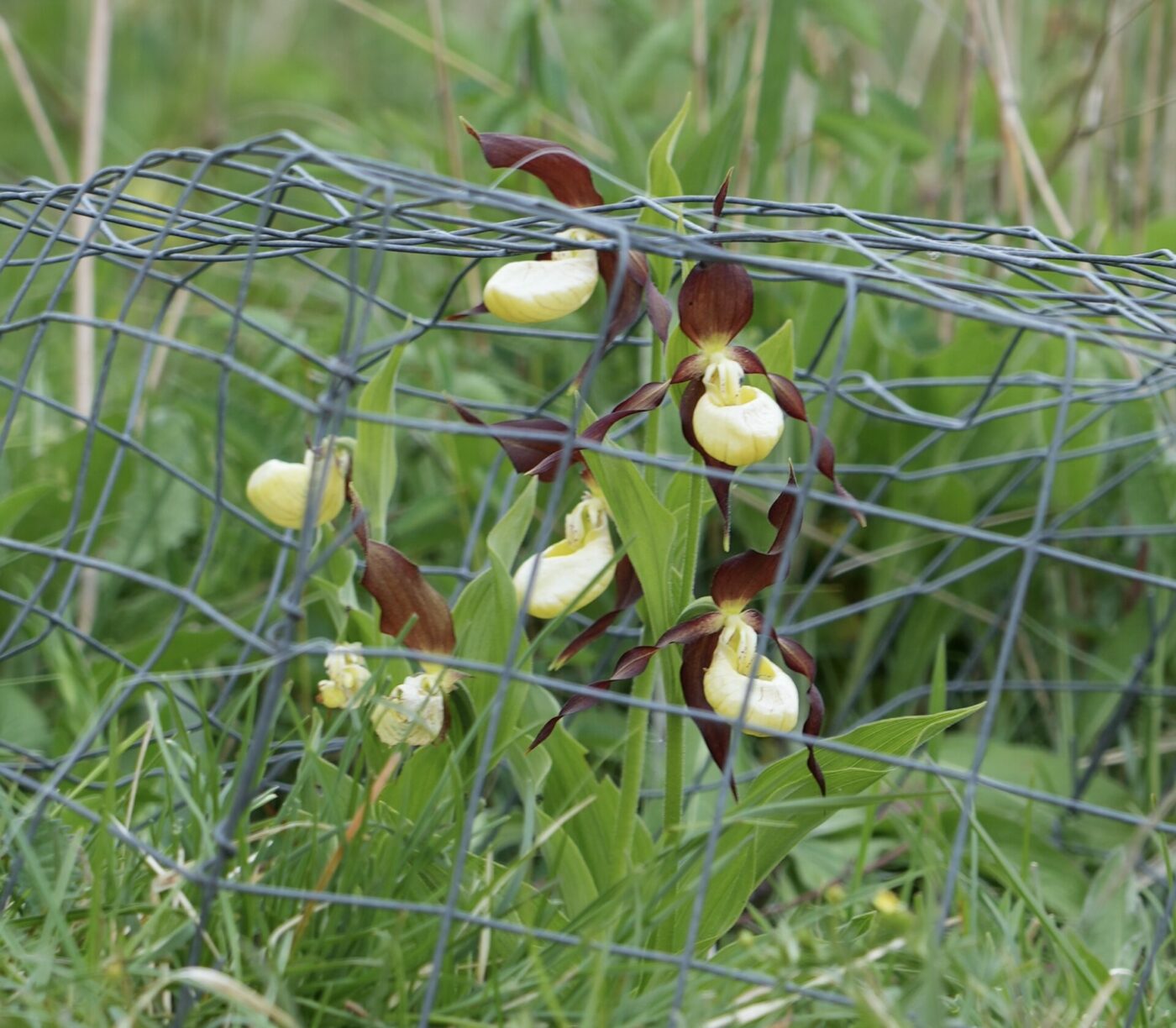
The plants here are the offspring of the single remaining plant rediscovered in the 20th Century. Cypripedium calceolus was never widespread in the UK, records only showing it in the north of England, and was thought to have been made extinct by human hands after Victorian collectors and unscrupulous opportunists dug them up and sold the flowers. The impact on the already rare flower was catastrophic, easily wiping out the entire species. Except for that one, lone plant.
Today, Natural England and Kew Gardens run a breeding programme. It took years working out the exact conditions necessary to germinate and grow them. Orchids often need specific soil conditions and fungal partners to germinate and for many, to then continue growing. In the UK, there are a number of reintroduction sites, though there is a frustrating lack of information about the progress of the programme.
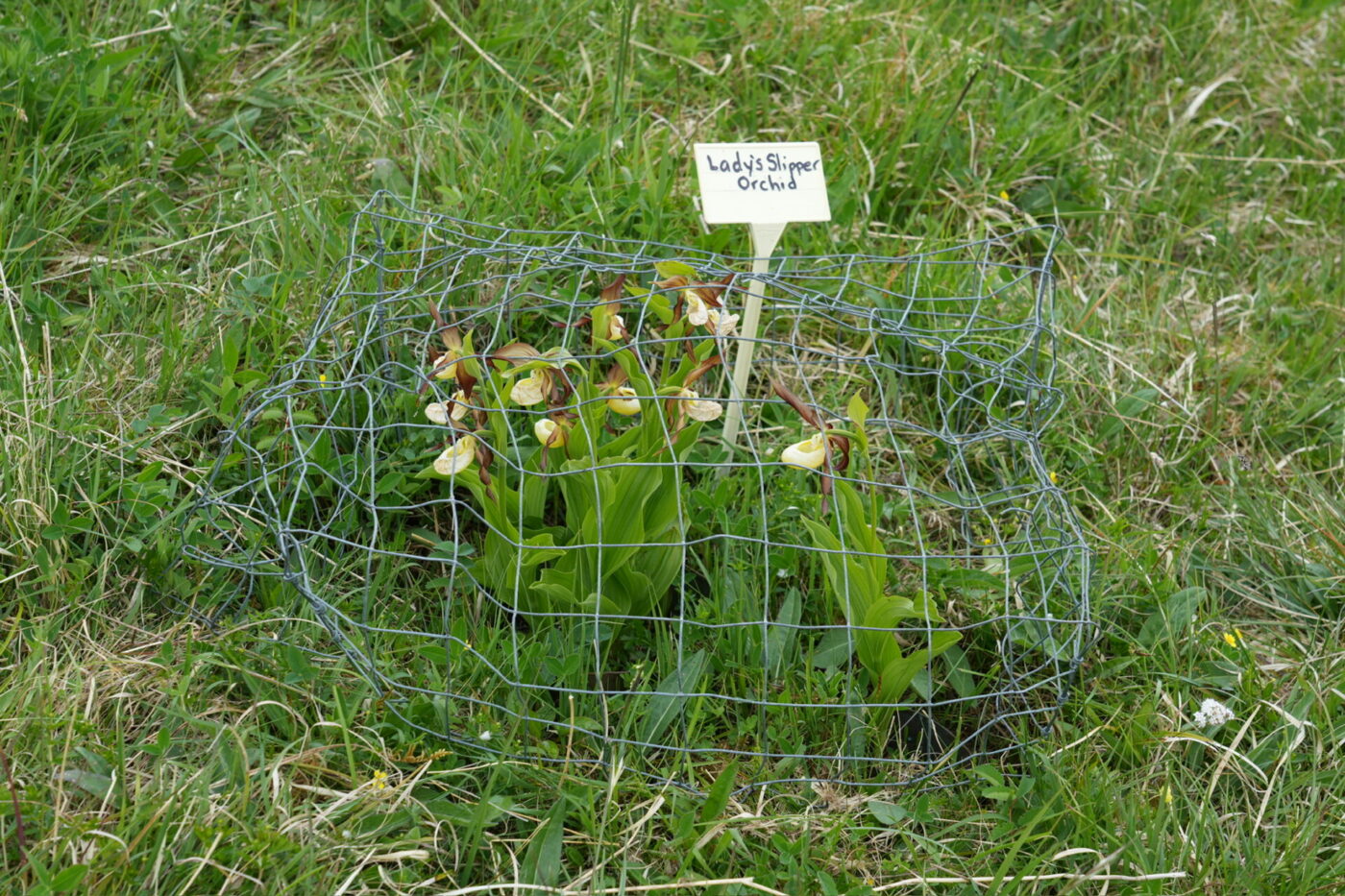
Cypripedium calceolus is more widespread across mainland Europe but is also in decline there. The important thing about the surviving UK plant, and now its offspring, is its genes. Who knows how long the population in the UK had been growing here before humans harmed it so drastically, but it was long enough for it to have its own unique genetics. It’s one of the wonders of evolution and natural selection, that as species spread into new habitats and new conditions, over millennia they begin to adapt and change, often with their own unique characteristics. These could be visual differences, such as changes in shape or colour, or they can be hidden differences, such as greater resistance to disease or greater hardiness. This variation in the gene pool of species is vital to protect because it can help ensure the survival of species in a changing world. It’s my biggest concern for life on earth as we continue to shrink habitats around the world, and therefore the overall gene pool of life on earth for the future.
A few things struck me about the plants at Kilnsey Park, of which I could see four clumps from the path. They look so healthy and vigorous! Bear in mind it can take seven or so years to flower from germination, so for each plant to have so many flowers suggests they are happy and strong. In addition, each clump appeared to have smaller plants next to it, which I’m hoping may be self sown plants – but could have been planted.
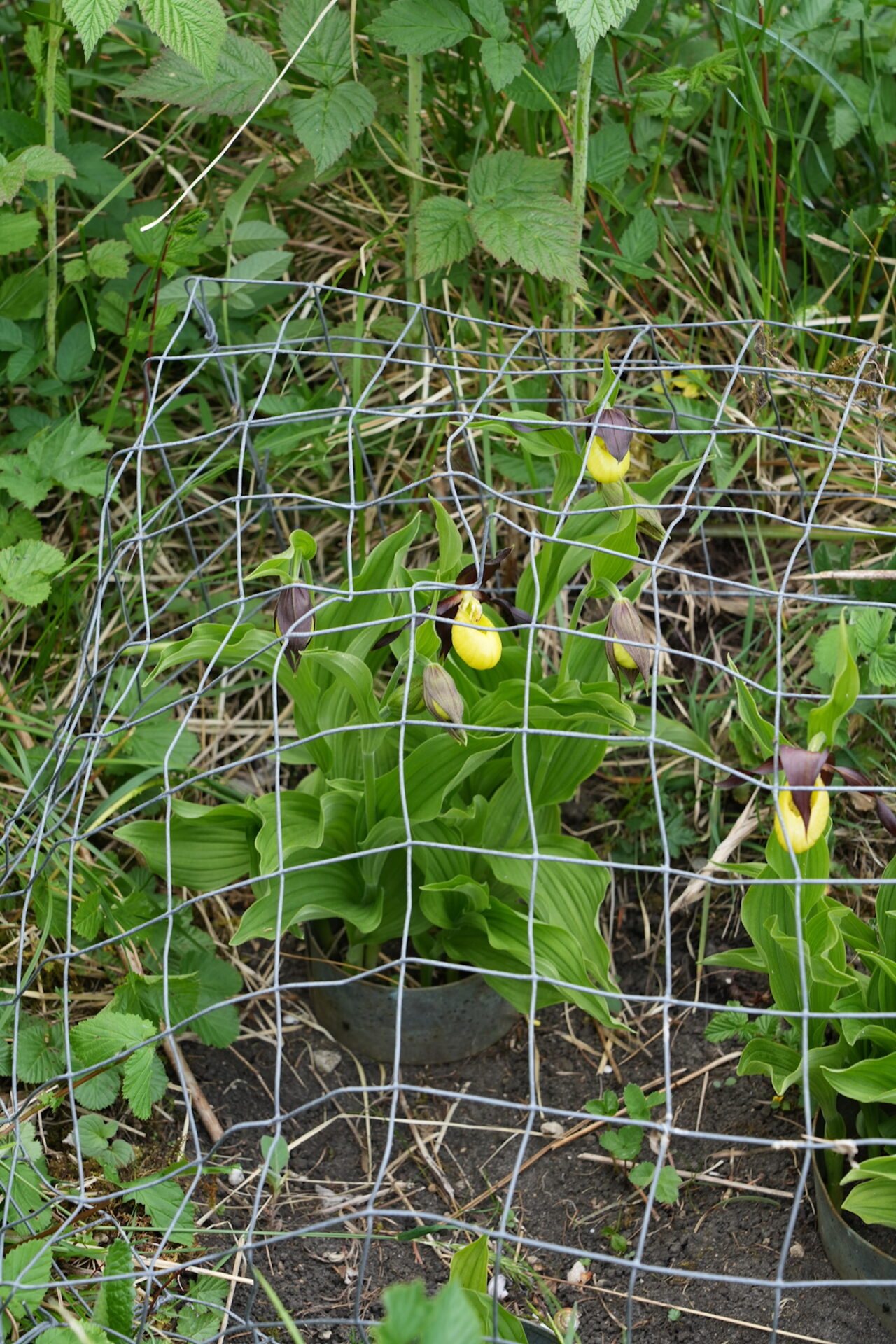
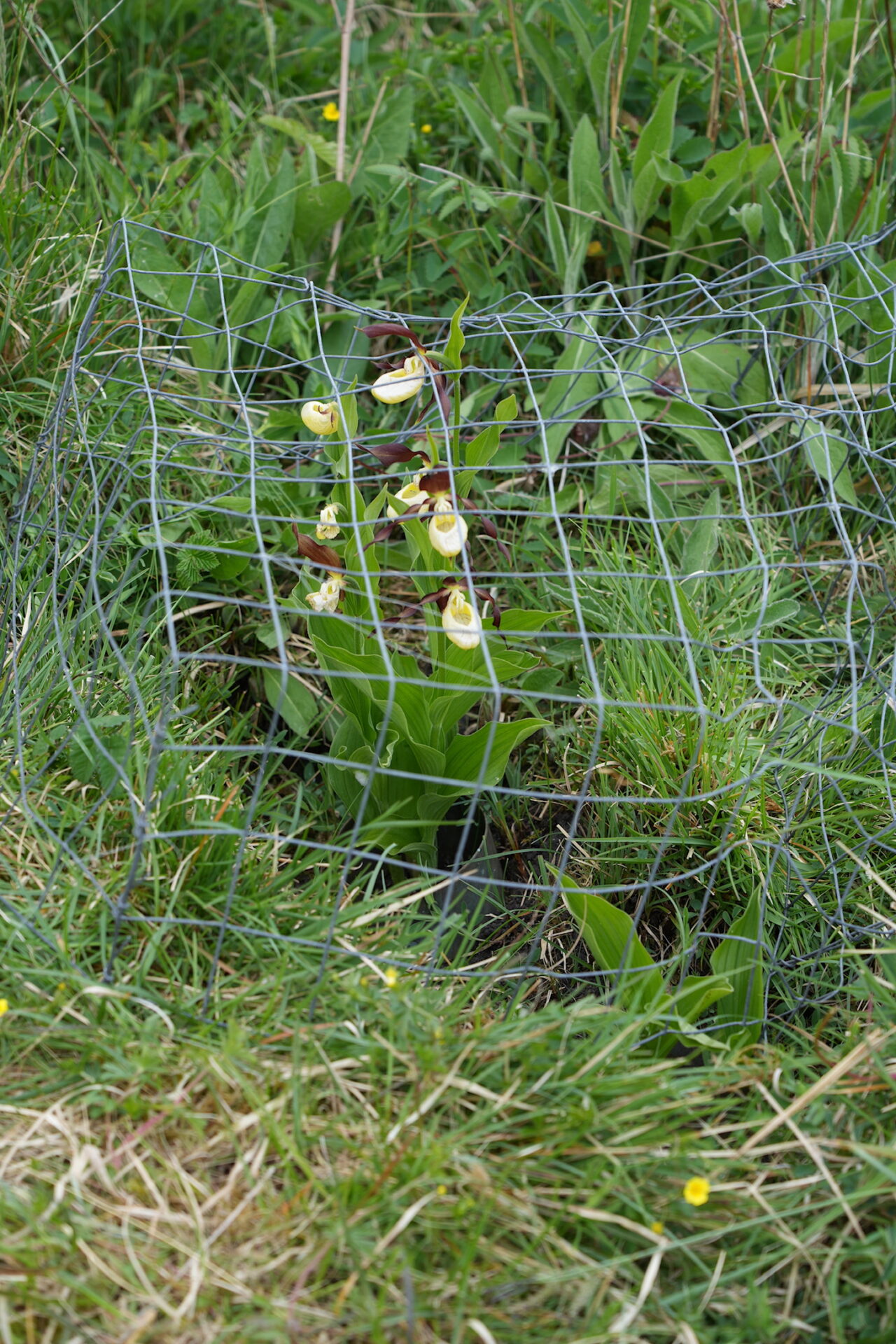
As you can see the plants are caged, this is not to stop human theft but to stop grazing from deer and rabbits. They also have copper rings around them for slug protection. Ordinarily in the wild, there are enough plants in a species population for a bit of grazing to not be a problem but when there are only a handful still establishing, it’s a concern. As such, I wasn’t bothered about photographing them with this protection on as it’s part of the story, in fact, I am enjoying being able to show you this.
On the downside, the fact the orchids have had other plants around them removed and the need for slug protection suggests they are not so strong at surviving on their own in the wild in this particular meadow. The plants have been flowering here for a decade or so and they aren’t growing all over the meadow, which also suggests the return to safe numbers for this plant in the UK may be a long slog. Some plants in the wild are simply not that strong and rely on the safety of their habitat with very specific conditions enabling their survival. Though, the fact the lasting original plant is thought to be over one hundred years old tells us that in the right conditions it is one tough, long lived plant.
I have to applaud the people involved in this programme of reintroduction, as someone who cares greatly about wild orchids and all wildlife, I am invested in what happens. Congratulations to Kilnsey Park for making the orchids so accessible for people to see from a little path, too often to protect wildflowers people hide them away to avoid trampling and theft, which I understand. But I am a firm believer that for the natural world to survive it needs more people around the world understanding and advocating for it, and for that they need access to see it first hand. Thank you to all who’ve made Kilnsey Park a positive contribution to that.
Follow my wildflower and gardening adventures by joining my Wild Way newsletter.
